Let’s heal our cities
Tapping into placemaking and active recreation



© 2022
Text and pictures by the authors / photographers or Unsplash (open source with credits). is work is licensed under a Creative Commons Attribution-NonCommercial-ShareAlike 3.0 Unported Licence. You are free to Share (to copy, distribute and transmit the work) and to Remix (to adapt the work) under the conditions of Attribution (you must attribute the work in the manner speci ed by the author or licensor, but not in any way that suggests that they endorse you or your use of the work), Noncommercial (you may not use this work for commercial purposes), and Share Alike (if you alter, transform, or build upon this work, you may distribute the resulting work only under the same or similar licence to this one). www.creativecommons. org/ licences/by-nc-sa/3.0/
is work is under the Placemaking for Active Recreation Kit (P.A.R.K.) and has received funding in the framework of the Erasmus + Programme of the European Union.

is e-book is an output led by Placemaking Europe, along with the support and expertise of P.A.R.K. fellow project partners.
 Edited by: Anna Louise Bradley
Written by: Anna Louise Bradley
Edited by: Anna Louise Bradley
Written by: Anna Louise Bradley
Olga Sowa
Giulia Sicignano
Alice Bazzica
Julia Clément
Vivian Doumpa
Ramon Marrades
Interviews with: Andreu Raya Demido , Cynthia Debono, Mihai Androhovici, & Miroslav Todorov
Layout based on the P.AR.K. design guide by Studio Punkt.

WHY READ THIS PUBLICATION?
We, from the Placemaking for Active Recreation Kit (PARK) team have researched the intersection of placemaking and grassroot sport in the European context in order to propel our cities forward into higher quality of life for all.
Are you intrigued to use physical activity as a tool to better our everyday life and experiences? Are you work-munity development? Do you want to bring your community together while considering health and inclusivity? Then this publication is for you!
We motivate you to take these learnings forward into your own work in public space in the pursuit to bring about more active and connected communities. Enjoy! The PARK Team

Placemaking: the process of building communities around a place; working with communities to build urban space into home-like places. The term was coined by Project for Public Spaces (PPS) in New York City during here.
Within this process, we at Placemaking Europe recognise a handful of necessary elements that set you up for a long-term and resilient high quality place: get to know and deeply engage with your community, take short term action to experiment, bring out human-scale in the plinths and the street experiences, work with with developers, think long-term, connect with your local civil serv-
Triangulation: Bringing together multiple types of activities in one space. By doing this thoughtfully, more users can interact and connect on new ways to evolve the place and generate added value for one another - in other words, a place becomes more than the sum of its parts when they exist together. Further, this strategy adds ‘eyes on the street’ for safety and motivates increased use.
Orgware: how the functions are organised, including the daily management of the place, the maintenance of the area, and how decisions are made and communicated.
Software: how the place functions for its users, what types of behaviours occur, how do the people socialise and practise their cultures.
Power of Ten: in any urban square or area, there should always exist at least 10 reasons for a user to be there or to participate in different activities. Urban spaces and the places we create do not exist in a homogenous state, but rather many parts that come together, where all users and want to be. Read more about the Power of Ten here.
Eyes on the street: an idea put forward by Jane Jacobs, sees that humans want to go where other people are to observe each other and to feel a sense of safety from the collective surveillance on the street. By having many users observing and participating in the public realm, behaviours that go outside social norms and rules will likely not be tolerated. Check out The Death and Life of the Great American Cities by Jane Jacobs.
Hardware: how the place exists in a physical sense. Does it have appropriate pedestrian infrastructure, colourful features, nice quality materials such as street furniture to relax or clean trash cans; is the physical design nice to stay in and enjoy? Read more about orgware, software and hardware -- and how to combine to make great places -- here (pp 10).
Stakeholders: anyone that can be impacted by or assert power to the project at hand - this ranges across all levels, from those who are low to high in either category. Often you start with the groups who are high in these considerations, but then you must grow to include those who have been overlooked or not yet considered. For example, you may initially think of the land property owner, but you should also consider the land maintenance worker or the local trash collector.
Place-led: using the inherent identity and intangible qualities of a place to guide your project into the next steps. This can also be called the ‘DNA’ of the place. Naturally, this is a necessity in placemaking. To best understand what are the qualities and get to know your place, implement the Place Game analysis. Within grassroot sport organisation, perhaps this uses the communities norms for types of sport(s) practised as a starting point to build from.
Sustainable placemaking model: (Rather than a business model!) A framework building on the placemaking process to include future oriented organisation, governance, and funding to ensure the placemaking intervention will move beyond the temporary in order to provide long term impact - social value, among environmental and economic. Thus, creating a sustainable mechanism is a means to achieve this goal; to create a feedback of social, environmental, and economic valuesuch as connection to place, sense of belonging, and social cohesion- to ultimately bolster a lasting higher quality of life for the local context. Importantly, the nature of awork in order to foremost support and maintain ‘people’ and ‘planet’.
Top-down: decisions made by a higher up for the overall system (“controlled, directed, or instituted from the top level”). This is often found in rigid bureaucratic systems.
Bottom-up: when citizens can take their own actions to start a movement and intervention, where all those involved have the chance to get involved and make a statepolicy.
Co-create: within a participatory process, users and stakeholders are able to work together with the project team to bring about solutions.
Light - quicker - cheaper: Getting to action right away to make change happen in an easy manageable way until the long-term solution is found and able to be implemented. This is a great way to test out ideas to see if they work for the community and to build trust that they are being listened to and long term change is in the process. This is often found with bottom-up processes.
Participatory process: when the users are genuinely welcomed to be involved and make an impact in the decisions throughout the whole public space process. This is from when you begin to get to know the place through handing over the place management, or long-term care, to the community) , not a one moment consultation.
Plinth: the groundlevel facade of a building or structure. We are particularly interested in plinths that are next to public space. We recommend a series of characteristics for good quality and human-scale plinths in The City at Eye Level. Brick wall with no other use? Can you turn it into a temporary squash court for the day? As community organisers and citymakers, we can creatively work with the plinths around us to transition it towards the human experience, and even engage with building/business owners to see how they can make their facades more inviting and porous to the public sphere.
OBSERVED IN PUBLIC SPACE
Through our placemaking work in public space, and research on how users appropriate their puband general ways that people practise physical activity in the are not necessarily exclusive and do not hold hierarchy from one another!
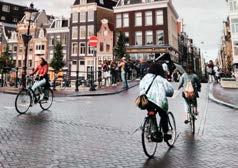
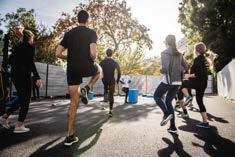
Or “experienced”, can bepractised in organised groups and scheduled in advance; seen as expert, aspirational or competitive; ‘no pain , no gain mentality’. Ex. Private group bootcamp, or distance running.
Recreational ; more fun and games/playful oriented ; strong social dynamic, can have a spontaneous element to it. Ex. Neighbourhood park "pick-up" games like frisbee or tag and the city's swimming area.
Active commute; a daily practice incorporated within existing routines/ aims, daily life routine. Ex. Walking to catch public transit, cycling to work, walking your dog, using the stairs, daily lunch break stretching and movement.
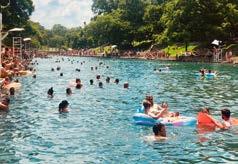
 By: Anna Louise Bradley, Alice Bazzica, Julia Clement and Olga Sowa
By: Anna Louise Bradley, Alice Bazzica, Julia Clement and Olga Sowa
Introduction
As human settlements become increasingly more urban, our blueprint and inner physiological need for movement remains untouched. From our position as citymakers and placemakers, we, from Placemaking Europe, identify the nuanced and intertwined nature of placemaking and practising physical activity in our public realm. Together, here, we explore why we should adopt placemaking to support physical activity and vice versa -- how embedding physical activity within community development advantageously supports great quality places.
Intrinsically, there is a shared human need to move our bodies - regardless of background, age, race, gender, education, or ability.
As we progress, our human needs—however constant— are also able to expand for greater experiences. Namely, moving our bodies for physiological purposes evolves to recreation, leisure, exploration, enjoyment, connection and stimulation alongside the physical mechanism of movement. We recognise sport, movement and physical activity as a democratic and inclusive way everyone can take space and make place in their neighbourhood. In theory, regardless of one’s economic background, one can step outside the home and use the outdoor-scape to walk, run, play etc. Unfortunately, this is not equally accessible for all persons. Those without stable housing or work, or that lack safety, must face intense life stresses that outweigh the daily need for a walk or physical play.
Through community participation and the co-creation of our built environment (both major foundations in placemaking), in terms of the hardware and more importantly the social norms and organisational governance; we can use our political will to motivate representational change for the better. In every neighbourhood this can materialise differently, but ultimately, through placemaking we can mitigate social cohesion with deep listening, implement a mentality of the commons, crystalise social infrastructures, and promote local economies so that residents may feel able and empowered to use the public space for their human wishes and needs - physical activity being a major one. In this way we are able to join the right to movement and the “right to the city.”
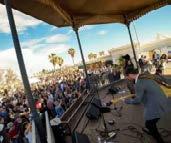
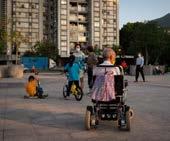
Obesity and related chronic diseases are now epidemic in cities. Today, urban design too often promotes sedentary rather than active daily lifestyles. Placemaking aims to reverse these trends, providing urban planning practitioners with tools to create healthier public buildings, streets and urban spaces. Placemaking uses active design to encourage stair climbing, walking, biking, transit use and active recreation. Drawing on the latest academic research, as well as best practices de-making offers innovative ways to contribute to the vision of a more livable urban future. Placemaking for public health, but also for the environment and social inclusion in the city. Design strategies that increase physical activity and improve health - for example, measures that encourage walking rather than driving, using stairs rather than

elevators - also tend to reduce energy consumption and greenhouse gas emissions. In addition, land use planning can help not only people who can climb stairs daily, but also users of all mobility, ages, and backgrounds. A diverse, active and healthy population and a sustainable planet are synergistic.

We know humans are a social species and need to connect to one another, form attachments, and build a sense of belonging to pursue a healthy lifestyle. While we may not experience threats the same way our ancestors did, we continue to rely on and trust our neighbours for our well-being. We seek out eye contact in daily negotiations in micro-moments on the street level - stepping to the side, “after you”, a kind hello.
In fact, these apparently small actions/gestures combined with physical activity, such as active commuting, indeed contribute to demonstrating that the city is a tool for human connection. And that physical activity practised in the public space enhances our attachment to that place and subsequently can lead to social mixing and thus, social cohesion, as well. In fact, a by-product of these social interactions oftentimes results in the creation of new and
These, in turn, produce mechanisms of inclusions or exclusion for a particular social group. For instance, if only a
physical activity that can result in other groups not feeling welcomed in that same context. On a more positive note however, the same process of space appropriation,
base from the group itself. Therefore, people usually feel enabled to use a space if they perceive themselves as welcome, they will start to use it and build a sense of belonging and community around it.

Similarly, the act of moving in a space, appropriating it, stimulating the senses within it has been growingly contributing to translate one’s sense of space into place, enhancing one’s sense of attachment to that space. For instance, studies related to city marathons underlined how the festivalisation of the city dur-
event, positively contributed to one’s sense of belonging to that city.
Indeed, successful and user-friendly city designs -
istics to the fore: walkability, inclusivity, and ownership/ sense of belonging. For this reason, placemaking applied to public spaces is a successful and sustainable practice which synergistically creates great quality places in which people want to keep coming back to—for health pursuits and ingrained into their daily life.

TO PRACTICE PHYSICAL ACTIVITY IN PUBLIC SPACE

Public space is political, whether this be in obvious manners or through more subtle and pervasive mechanisms. We know as urbanists, geographers, and

as well as for physical activity - that match the needs of POC, non-gender conforming, queer, poor, and differently abled persons.
placemakers that the access to safely and easily enjoy high quality public space is unfairly allocated; so often, the rich, white, abled-bodied, classically educated and hetero-normative persons access public space facing less inconveniences or threats than those many these categories. We need to facilitate and motivate public spaces - in general,
There is space for all individuals in our public realm, and physical activity is a human need. Period.
“There is space for all individuals in our public realm, and physical activity is a human need. Period.”
Results show that wommore harassment than men when taking public space. In this line of thought, we also see disproportionate harassment (and assault) interacting with gender in public space for physical
activity as well. For example, a study examining runners’ experiences found that 58% of women have been harassed while moving in public space compared to only 4% of the men in the sample.

A study examining runners’ experiences found that 58% of women have been harassed while moving in public space compared to only 4% of the men.
This negative experienceranging from heckling to downright threat and fear - is almost 15 times more prevalent for women than men working out in the outdoors.
Time and routines are closely linked to the privileged categories that aid a person to use public space for their desires. Finding time to practice recreational physical activity is a luxury for many, and perhaps an unrecognised advantage for others. Women, POC, refugees, migrants, and the time disadvantage.
Seek out innovative and sensitive styles of ‘sport’ that are not rooted in masculine hegemony, colonisation, or gender norms. For example, football is fraught with hyper-masculine norms, and further, numerous sports teams have - until recently - been represented by appropriating mascots.
In your context, with your stakeholders, what are the different strategies to welcome all identities to feel safe and enjoy moving together and across different work and care giving schedules? Does this for each person to choose what they are most cominclude child care in your activation?

Through our PARK research, of infrastructural factors that can - if at high quality - motivate physical activity in the public environment. These include:
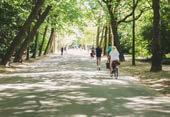
• Safe
Do all the users feel secure, and is the environment perceived positively regarding crime?
This is important for vulnerable populations- such as children, POC, women, and the elderly.
Physically barrier free
Is the user able to traverse across without impediments?
This is important for those who use wheelchairs, the handicapped, and those less agile.
• Close proximity
Is the physical distance within a manageable proximity on foot?
Inherently, routes and destinations must be reachable for the users, especially those with vulnerablities.
• Pedestrian infrastructure
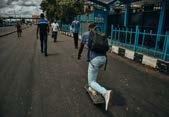
Are the sidewalks, signs, and seating options present and in good condition?
This is a basic need for users to be able to rest if they become fatigued - especially for the elderly, pregnant, or ill.
• Cosmopolitan features
Are there seductive, leafy, and creative qualities to the streetscape and plinth?
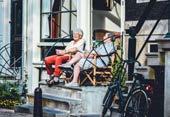

This directly relates to creating an environment for the eye level and while also deeply considering human scale.
• Additional trigger words: crowdedness, width of sidewalks, protection from sun, wind, rain,
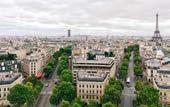
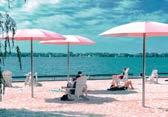

 TO PRACTICE PHYSICAL ACTIVITY IN PUBLIC SPACE
TO PRACTICE PHYSICAL ACTIVITY IN PUBLIC SPACE
As human settlements become increasingly more urban, our blueprint and inner physiological need for movement remains untouched. As lifestyles and jobs become more sedentary and digitally based, especially since #workfromhome due to the pandemic, and also considering the increasingly more drastic social inequities facing our world, the ability to recreationally practise physical activity in our urban environments becomes more symbolic of our human “right to the city” and need for organisational systems that protect and motivate people’s access to high quality movement.
Multiple and countless bencontribute to mental, functional and social wellbeing.
Did you know that physical activity and physical play in our built environment, across ages, cultures, and genders, has been shown to:

• Widen mindset,
• Help problem solving abilities
• Boost creativity
• Support cognitive attention
• Relieve feelings of anxiety and depression
• Bring heart rate and physical stress back to baseline
• Manage heart and organ health, such as visceral fat or cholesterol levels
Use community based social marketing methods to nudge your stakeholders. For example, tap into social norms, "We applaud this community and their work to take part in 20 minutes of physical activity per day", and risk aversion messages, "by getting rid of X negative behaviour, you are saving yourself from Y negative consequence," are highly effective to alter human behaviours.
PRACTISING PHYSICAL ACTIVITY & EXPERIENCES IN PUBLIC SPACE
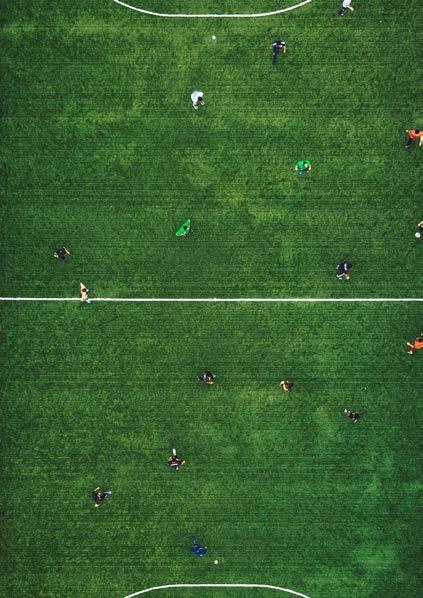
Intuitively, by physically being in an environment, a user is able to gain more stimulus and take in more characteristics about the surroundings.This could be recognising the building decorations of a storefront, admiring leafy trees overhead, or alternatively, alerting oneself to threat, such as harassment. Although an experience can vary from positive to negative (subjective to the user at hand), research suggests that the more routine and longer
Survey research shows a positive correlation between user’s perception that they can use the public space for their own recreational needs and their perception that others are able to do so as well. This could indicate that users promote new social norms that motivate inclusivity by practising physical activity in public space, however, this could also mean those who practise physical activity are perhaps ignorant to the challenges and barriers that many face to be able to play outside safely without consequence.
duration of time a person spends in a space, the more linked their identity becomes with the environment.
This can be seen with litter, trash, and maintenance behaviours, as well as with self report correlating a sense of belonging with using the space routinely for recreation. Research shows that when a community is emotionally connected to a space, they take care of it and litter trash less often. In our questionnaire surveys, users report a stronger sense of belonging when using a space for active recreation and movement. This is also supported in other studies on embodied movement in the public realm.
Optimistically, we can interpret this that if people feel they are able to go out and use public space for movement, this means they also support their neighbour doing the same. As grassroot sport organisers and placemakers, we can use this result by tapping into existing ‘sporters’ local networks to invite those they know out to move in other programme events.
Pessimistically, we can interpret this that in general, only the privileged or ignorant practise physical activity in public space. As grassroot sport organisers and placemakers, we must critically consider who is missing from this resource and how we can support them to feel welcome and safe to appropriate space for their own physical activity needs. This can be achieved through in depth stakeholder mapping and spending time in the area to observe and get to know the surrounding communities.
“...research suggests that the more routine and longer duration of time a person spends in a space, the more linked their identity becomes with the environment.”
Interestingly, and perhaps not surprisingly, certain users often practise sports correlated to one another. -
ners are more likely to also participate other individual and what are perceived as “intense” sports - in this instance, using a private gym
sport may directly overlap (a football pitch is almost always outdoors), this is not always the case for all types (tennis courts, basketball for example).
they are somewhat adaptive to other types of movement (positive correlations,cant).
“...these correlations show the trends that we as sport and community organisers can tap into to strategise engaging target groups.”
for training - but walkers are more likely to engage in what are perceived as “lighter” sports - in this instance, cycle outdoors.
Additionally, those who practise organised sportsuch as football or basketto also practise physical activity outdoors and engage in strength training. While the location of organised

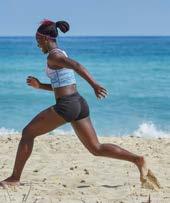
Overall, these correlations show the trends that we as sport and community organisers can tap into tostrategise engaging target groups. And it also reveals that those who move their bodies - across types or public/private - are positively correlated with some other movement in one way or another; this means that most of the respondents do move their bodies, and that
Now, it is important to investigate and capture information on those who are averse to physical activity and understand this specific group’s trends.
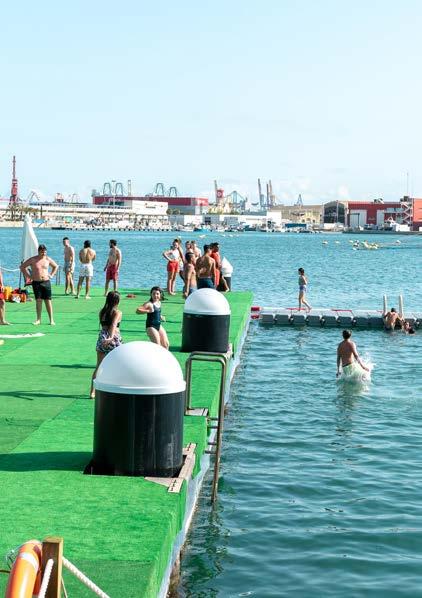 MALTA // SPAIN // ROMANIA // BULGARIA //
MALTA // SPAIN // ROMANIA // BULGARIA //

In the case of Malta, the biggest barrier to habitual physical activity like walking and cycling is the lack of open spaces and supportive infrastructure that allows users to lead an active lifestyle. The rapid urbanisation that the country has gone through over the past changed the landscape of the island and while smarter cities, taller buildings and wider roads were being constructed, physical activity was pushed out of daily lives.
accommodate the large number of cars on the island which is growing faster than the demographic growth. As a result, the urban environment has become sig-compatible with outdoor exercise and/or habitual physical activity. Local cities and villages have become car centric, posing serious danger to pedestrians and cyclists, hence discouraging the community to opt for active mobility. This is of serious concern given that Malta boasts the highest rate of obesity in children in the European Union and a third of the Maltese population is estimated to be recent studies indicate that over 500 Maltese lives are shortened annually due to air pollution.
Despite the increasing awareness on the adverse effects of inactivity, to date most local approaches have focused mainly on eating behaviours while the link between the built environment, physical activity and wellbeing has received little attention. Moreover, solutions drafted by city makers to meet these challenges are not created or consulted with future users and this often results in inadequate design that does not facilitate habitual physical activity. For instance—heavy use of concrete and lack of vegetation in public spaces are not adequate for Malta’s Mediterranean weather, which is, in turn, giving rise to a number of adverse climatic conditions. Many recent projects exhibit these negative characteristics, and some also even lack basic thinking about users of public space and transportation infrastructure -- in
these examples, they prioritise cars over people. However, there are positive examples. Take the Skate Park has been restored to good condition by the local community through citizen engagement. Because of the clear local interest in transforming space to place— where a community can connect around. In contrast, a similar skate park was constructed by the local Government, but despite the lovely weather in winter, it is unusable due to heavy unsafe for users.
This could have been easily avoided if the Government consulted with the users/ community, who are knowledgeable and have experience in building skateparks–they would have certainly given their input on the design and how to avoid the
20

In the case of Malta, it is important to emphasise the role of the local community in the placemaking process. Given the substantial economic burden caused by lack of habitual physical activity, environmental and ecological issues like heat islands, lacking vegetation and the pressing climate change issues, interventions that encourage people to get and stay active may be attractive options from a

From our talks with the Maltese team, here are some com-
Use the more known term 'Open Streets Movement' instead of placemaking to get both bureaucrats and the community on board with interventions.
Fitness spaces/parks do aim to be inclusive, but fall short. Since Covid, more participation amongst ‘abstainers, for example, walking the promenade is popular.


Attention is needed to restore poor paths.
Stakeholder groups to target include: elderly, migrants, and children.
In Spain, a tradition of children and young people playing in the streets has now greatly disappeared due to increasing urbanisation and occupation of space by vehicles. The 1992 Olympic Games brought renewed attention to sport and to the need for sports venues and facilities. The most popular places for physical activity are parks, public gardens, public courts, and streets if

have also been installed in many places, but these are not often used and are deteriorating.
In the case of children and youth, group play and sports, often practised after school, are the most popular; some adult men also engage in team sports. In contrast, individual sports such as running or walking are generally more prevalent among adults and older people. Recently (before the pandemic) mass topdown running events have become very popular. Outdoor gymnastics facilities
In general, there are a large number of initiatives adapting public spaces for sport and physical activity (especially in the Basque Country and Catalonia), some cities already have such spaces and others are starting to develop them. There are several good local authority initiatives in Spain that have proven to be sustainable and supportive of physical activity. The most notable is Turia Park, which has changed the behaviour of local residents - many people have started walking, cycling, playing, running and using it as a route to work. A similar case is Madrid Río, a riverfront restoration project where cultural and entertainment facilities are available in addition to physical activity.
Barcelona, on the other -
enced in a positive way by the 1992 Summer Olympics, which led to the construction of many sports facili-
nanced by private investors, but also contributed to the restoration of public spaces such as the beaches from Barceloneta to La Mar Bella. In Zaragoza, on the other hand, Estonoesunsolar was initiated, a private-public urban puncture project involving the temporary use of public space with a longterm impact on improving its quality.
In Spain, successful projects have taken into account climatic conditions (lots of greenery) and have used major events as accelerators for bringing forgotten spaces back into use. When it comes to placemaking, there are some trends similar to it, but which do not
take into account its important element - community engagement.

From our talks with the Spanish team, here are some com-
It is recommended to have a variety of activities, with each
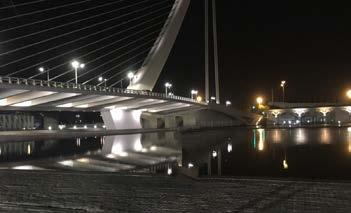
The term placemaking is not known; rather using healthy city or smart city are well received.
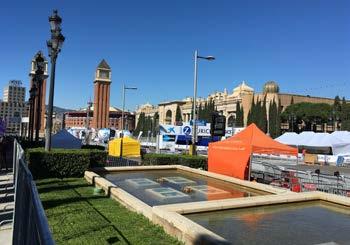

The leaders in Basque Country and Cataluña support city wide sport campaigns.
The Olympics have impacted both the physical nature of the city -typologies - as well as the focus.
Now, waterways with parks should be reappropriated.
Bulgaria started to work on the topic of sport in the city to bring it in line with EU standards, however due to the lack of well-functioning institutions, these plans remain on paper. Moreover, there is a lack of initiative in local communities and lack of awareness on the possible options to engage in and as a consequence a dependence on local authorities to organise activities and to provide facilities. Moreover,there is an absence of cooperation between sectors. In recent years there have been many state-funded sports and recreation projects. There are several placemaking organisations in Bulgaria. Projects funded by the state and local authorities include playgrounds, sports and recreation spaces or cycle paths. In some cases, theretation, resulting in main-
tenance problems or poor quality of construction. On the other hand, Most initiatives organised by NGOs include public participation. An interesting example is the approach of the Active Society Association in Vidin, which involves the public in the process through a competition (the so-called “Neighbourhood Wars”).
Tourist associations and informal youth groups are also associated with the marking of routes to encourage physical activity and nature exploration. In Bulgaria, local businesses are taking the opportunity to promote themselves by creating sports and recreational facilities, such as a park in Blagoevgrad, and in Kiten and Primorsko.

Bulgaria started to open up to the realm of sports in the
city in an attempt to bring it in line with EU standards. However due to the lack of well-functioning institutions, these plans remain mostly on paper. Moreover, there is a lack of initiative in local communities and lack of awareness on the possible options to engage in and as a consequence a dependence on local authorities to organise activities and to provide facilities. Moreover, there is an absence of cooperation between sectors. In recent years there have been many state-funded sports and recreation projects.
Projects funded by the state and local authorities include playgrounds, sports and recreation spaces or cycle paths. In some cases,
consultation, resulting in maintenance problems or poor quality of construction. An example of this bad
construction being the bike paths installed in Varna. On the other hand, most initiatives organised by NGOs include and foster public participation, since they usually work in partnership with neighbourhood associations. An interesting example is the approach of the Active Society Association in Vidin, which involves the public in the process through a competition (the so-called “Neighbourhood Wars”).
In regards to placemaking, there are several active organisations, such as: BG Be Active, Power Jump, the Public Centre for Environment and Sustainable Development, Live Active Association. The most active is indeed BG Be Active, with its programme _Spot Bulgaria. Their aim is to renovate and revitalise formerly neglected areas together with communities of
26

est and neighbourhood associations, with the purpose of bringing local sports facilities and fostering community engagement.
Tourist associations and informal youth groups are also associated with the marking of routes to encourage physical activity and nature exploration. In Bulgaria, local businesses are taking the opportunity to promote themselves by creating sports and recreational facilities, such as a park in Blagoevgrad, and in Kiten and Primorsko.

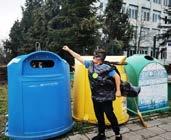
While there has been quite some work to support physical activity in public space - such as laws - there has not been much impact, relatively speaking.
The work done to promote physical activity in public space is mainly focused on cities. Villages receive little infrastructure, support, or activities.

Looking to create more variety in the options.
It is recommended to tap into innovative infrastructures.
After Romania’s communist régime fell, an interest in the creation of public space sprang together with an enthusiasm for policies aimed at using the public space for physical activity at a neighbourhood-scale.
This greater awareness towards the importance of public space is mirrored in the latest judicial reforms, in which a legal basis for urban plans to include as many publicly accessible green spaces as possible, has been set up. In this regard, a governmental coalition between various ministries and programmes has been arranged in order to safeguard citizens’ access and recreation in public spaces.

Nonetheless, there is a generalised lack of recognition of the value and implications in regards to placemaking in Romania.
Notwithstanding this, even if initiatives are mostly deliberated by public authorities, they are becoming mostly appreciated on a more local, community-level. This trend is observable from the projects Adopt a Park! Suceava is moving! and Promenada de sub Tâmpa - Tiberiu Brediceanu Park which proved successful in safeguarding and ameliorating pedestrian and green areas by relying on both local and European funds. Nevertheless, a common challenge was to form a legal basis to protect the areas from cars and bikers from damaging the newly installed leisure facilities. Apart from this, these initiatives proved overall sustainable due to the inclusive and diverse outdoor facilities installed, allowing different users to access the space.
Another project aimed for children is The Kid friendly park initiative in Bucharest, which was concurrently developed between civil society and local authorities. The project was monitored by GOKID as a way to enhance the safety of parks for children and parents. Nevertheless, this initiative did not prove entirely as successful for the reason that it did not meet European quality requirements. Lastly, another more recent and successful project is the PUMP TRACKsigned to address the needs of young people who use skateboards and BMX bikes, addressing, in this way, the lack of proper sports facilities.
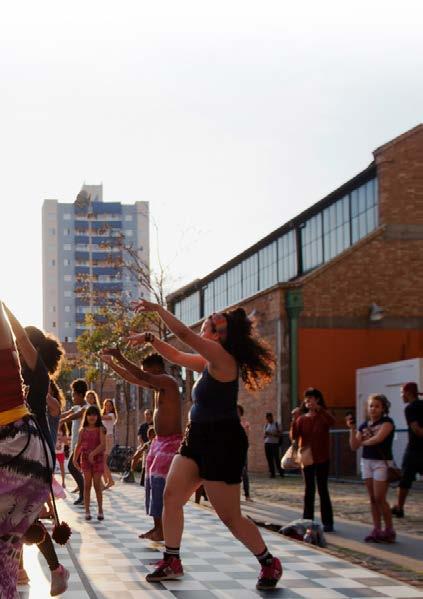

From our talks with the Romanian team, here are some com-
The term placemaking is reluctant to catch with the public. Without mandate, the concept to gather or go jogging in public space is considered taboo.
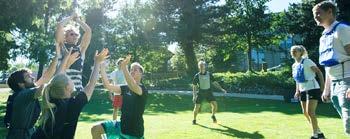
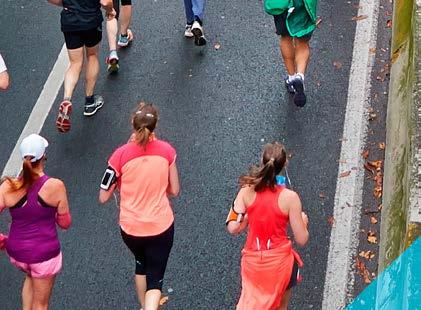
Historically, from the Middle Ages in this culture, it is hard to engage the public to participate.
The pedestrian pathways are in poor condition or heavily
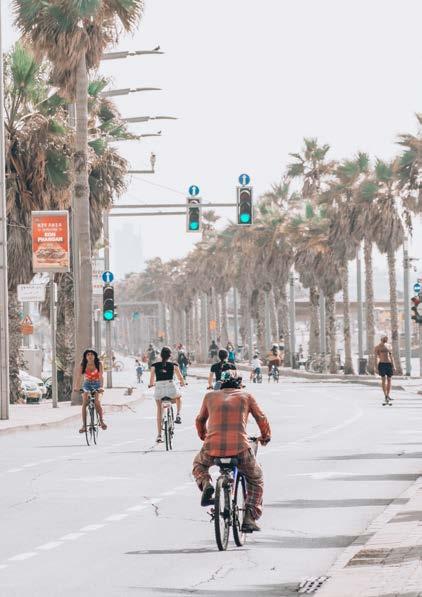

The importance of innovative policies for promoting physical activity is increasingly recognised by academics, and there is a push by national and subnational governments as well as international institutions for physical activity policy development and monitoring.
There is no single policy solution. An action plan in favour of physical activity in cities needs to be developed with the recognition of the local starting points in the efforts to reduce levels of sedentary behaviour. It should recognise the preferences for different types of physical activities, and by different population groups, varying according to local culture, context and resources while also considering the local economy.
The PACTE project has provided an interactive matrix to assist every municipality in the design of a customised Active City Action Plan. It invites municipalities to assess their own current situation, identify which elements of action are relevant, and ultimately build their own Active City approach. Therefore, prioritisation, feasibility, and speed of implementation will vary according to context.
An effective implementation requires the full engagement by all stakeholders to maximise the synergies and the coordination mechanisms. Research and innovation are also needed to inform both inventive policy and practice, and policy evaluation is a key element of national monitoring and accountability.

awareness campaigns are used to create a paradigm shift in all of society by enhancing knowledge and understandphysical activity.
Awareness campaigns can be used to communicate a variety of messages related to physical activity, targeting segments of the population who are less active, or some public spaces with underused potential for physical activity.
As an example, to liberate women from the judgments that hold them back from participating in physical activity, This Girl Can campaign seeks to show everyday women of different ages, body types, and ability levels participating in different sports. In the same way, No Elevators Day has been a successful way to turn people’s attention to an easy and accessible way to be physically active in public spaces by using the stairs.
While the link to placemaking is not explicitly stated in awareness campaigns, it is increasingly clear that the
the city for more active, healthy, and resilient communities. The Open Streets Day campaign launched in 2019 has drawn attention to the street as a place for physical activity, and more broadly to a place for people rather than cars.
Avoid overcomplicating the message to target groups.
Be realistic in your capacities. Rather than create an overload of too many programme events - as it is very challenging to manage the follow ups there - instead, disseminate activi-
Use an accessible digital platform, do not use hard copies.
Invest time and energy to develop local and regional networks - ask them what is incentivising and exicting.
Tap into “free” advertising free sources/broadcasts.
Work alongside local campaigns on health, transport, employment. Otherwise, adding another local agenda becomes competitive ‘noise’ to the audience.

Set up an independent evaluation mechanism. in advance.
Cultivate relationships with and use the media.
It is okay to trust your intuition. Often times, ‘best practices’ are based on experience rather than evidence.
Be creative and bold.
Consider the experiences of the whole community. Especially those who are the most vulnerable. Who do you miss? How can you help them be more safe and feel welcomed? Language, dress, gender norms, price to play etc.
Get a lay of the land and a feel for the place. Create your own Activity Trail and post it publicly in the neighbourhood for others to enjoy. Complete the Radius to help as well.
Try temporary interventions for physical activity and inclusive human-scale areas. Build trust with a Light Intervention.
Normalise space for sweating and getting a workout in by demarcating the space in a light way! Such as painted/chalk boxes on the ground. #guerillaurbanism #tacticalurbanism
Consider the climate. Are there times of the year, or even the day, that are best for weather? Do you identify any challenges that you want to tackle with climate strategies? For example, in a 'heat island' a shaded “green shelter” and bench along a pedestrian route can help support walkability. and sporters that can help you tap into the rest of the communtiy. After you've made some groundway here, try out a Placemaking Pils .
Make it clear to those you have networked with that you need their support and look to the for help. This works both ways, make sure you can reciprocate the help.
Convince your municipality to commit to public space by using the community's momentum. Also, see the Inactivity Time Bomb to show the economic costs of inactivity.
Collaborate across disciplines and connect with local business, schools, residents. Sketch a stakeholder map.
Host a Place Game. Once you have support from your community connect with your various municipal departments.
Consider the different ways to move - anything from pingpoing to gardening to rollerblading to Tai chi. Also the different ways we observe physical activity in public space (expert, spontaneous, and embedded). Be inclusive to all body types and abilities. Check out 'MOVEment Pills' by NowWeMove.
Make an interactive eye-level intervention in your neighbourhood to promote triangulation of space and eyes on the street. Co-create Facade Garden with your community, or invite them to your own facade garden planting!
Programme many types of micro-events to target different groups in your community so everyone feels welcome.
Facilitate ongoing activities throughout the whole year rather than a major event annually. Talk with the group about their experiences to practice physical activity in public space. Listen deeply. Try out the Plant & Seed Swap , Mobile Research Station , Park[ing] Day, or Pop-Up Cafe.
Find a mechanism to stay connectedyour community for calendar or idea sharing. Check out this community board in Oslo :) Or a neighbourhood open platform such as the Florum or La Pergola.
Ask your community directly what they want and try out the most populat ideas. Use the Open Call to learn of ideas, Sticker Democracy to vote, and Participartory Budget to fund.
Keep it local, smaller and sprinkled throughout the entire city/ area. Avoid programming at mega-parks that most users would have to drive to.
Scale up using social media, tag local and regional networks to spread the word of your work and physical activity initiatives to a larger audience. #letshealourcities